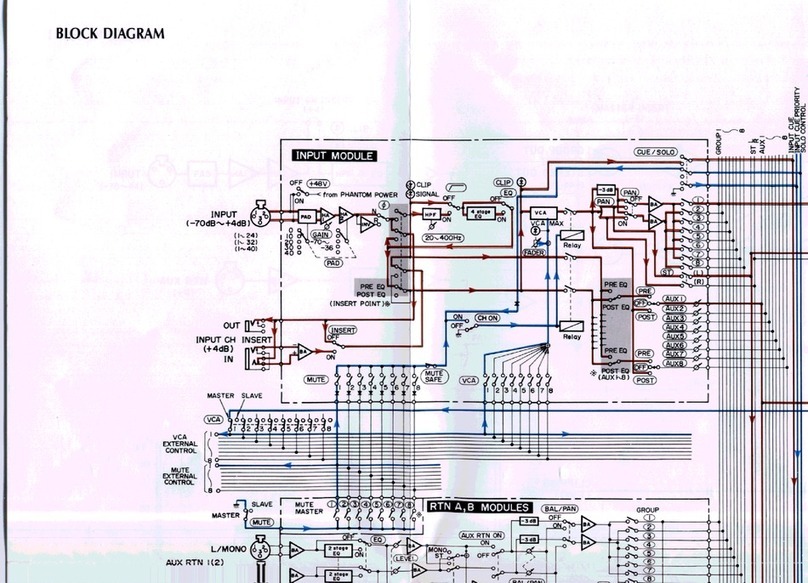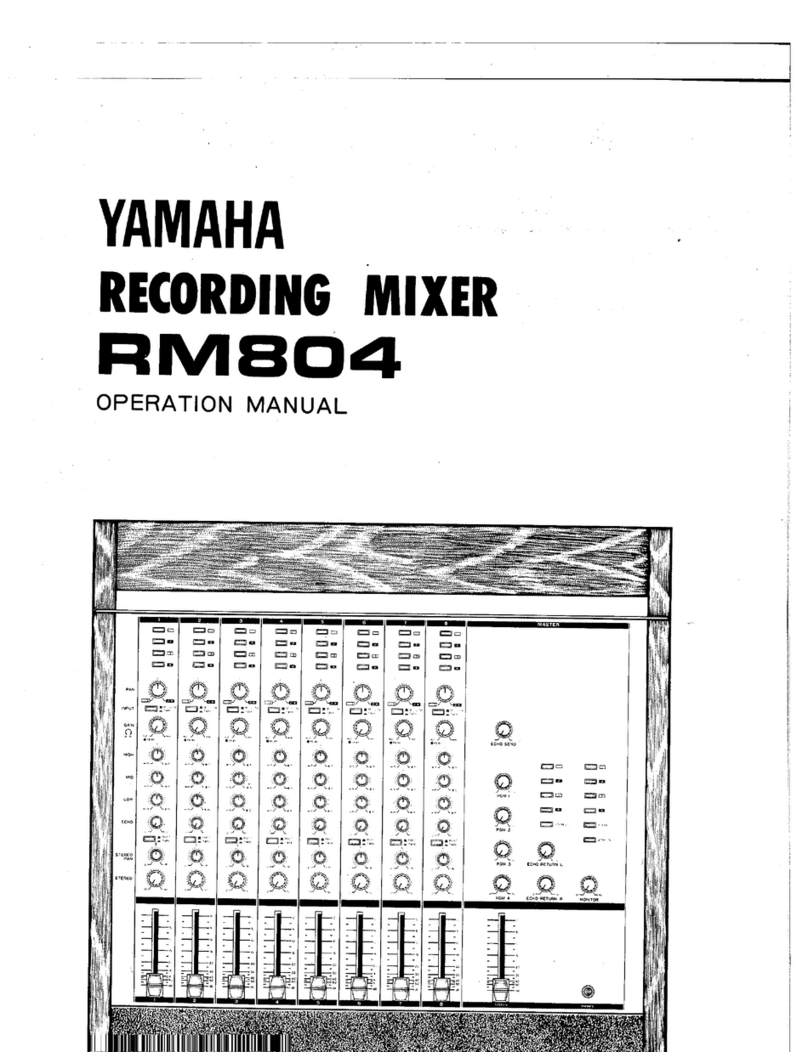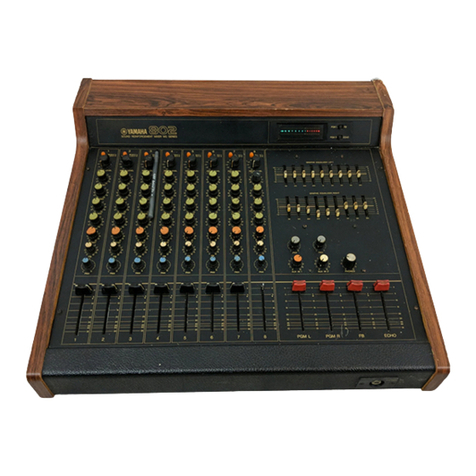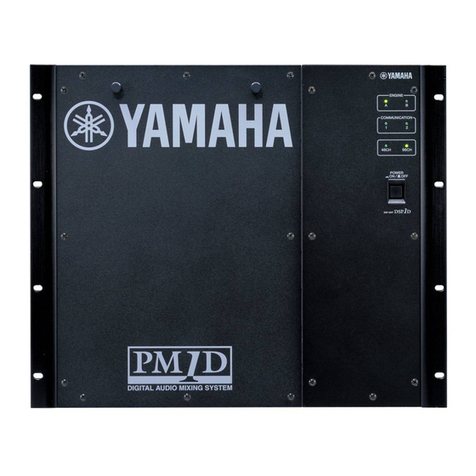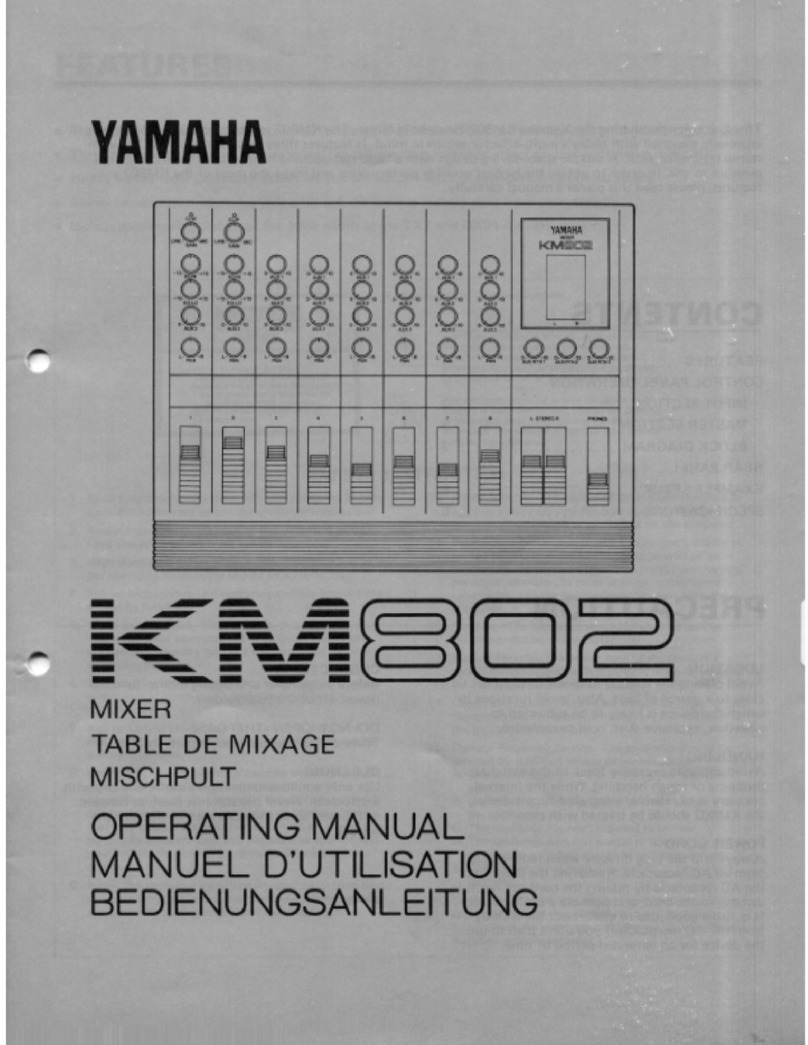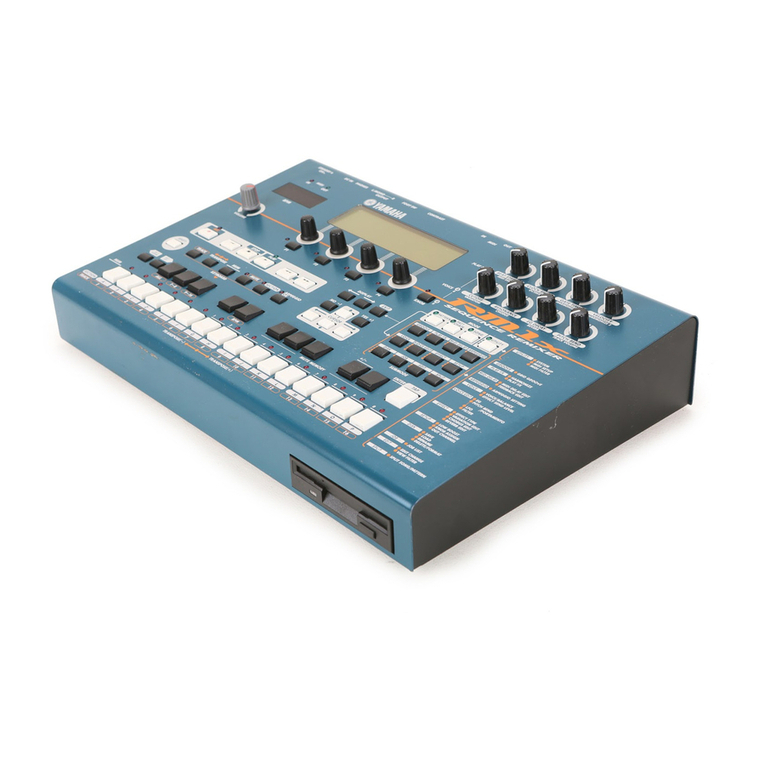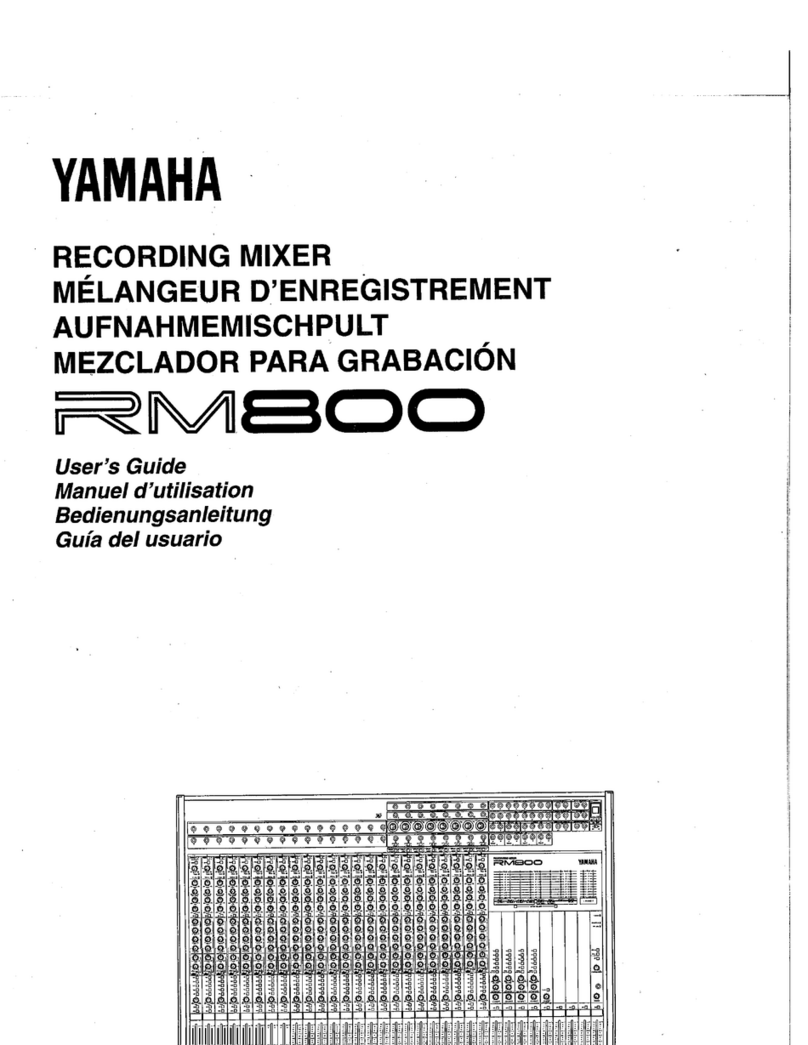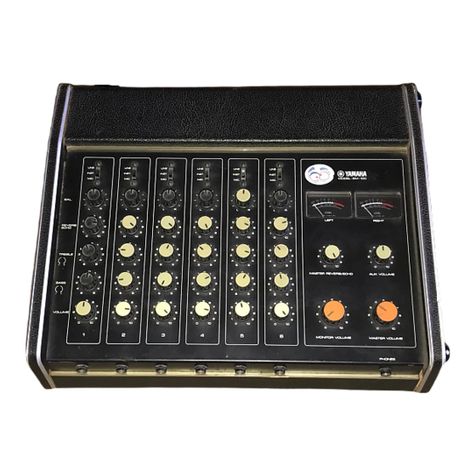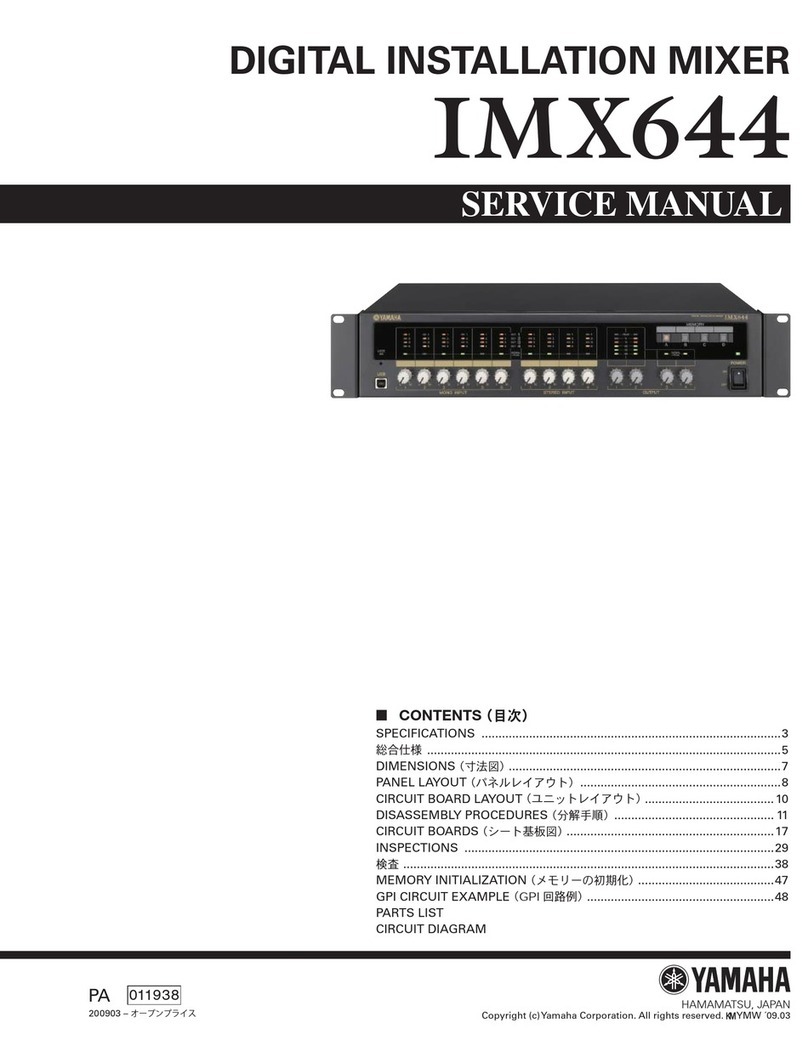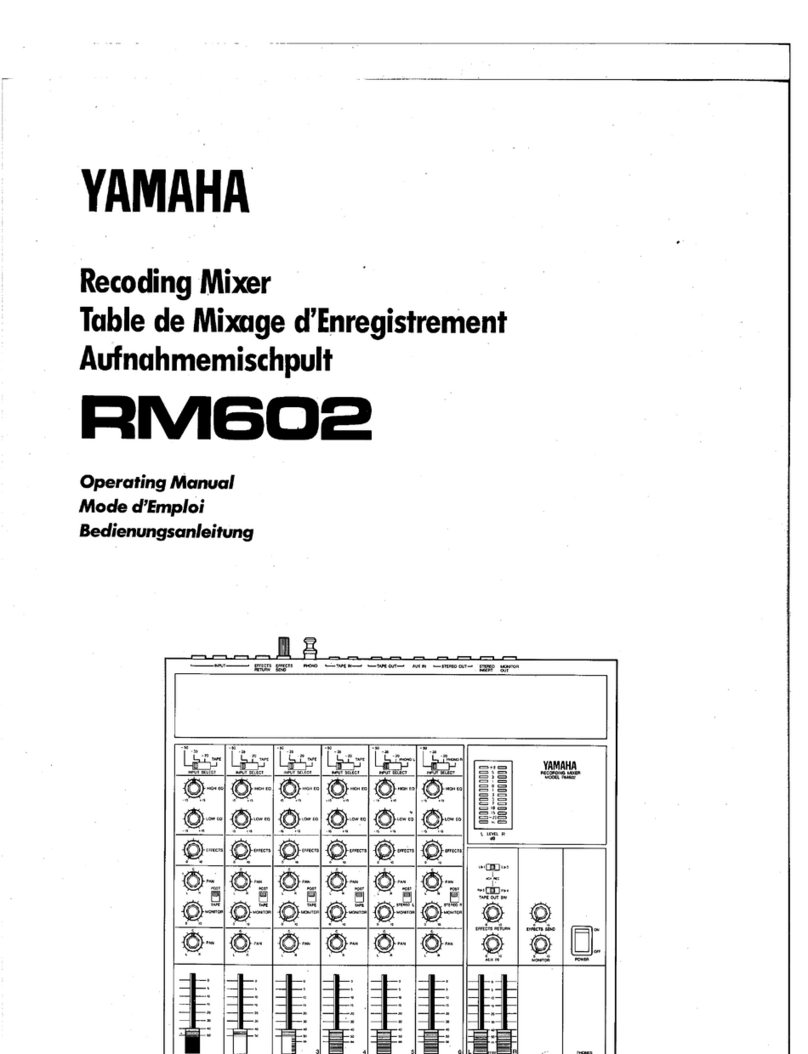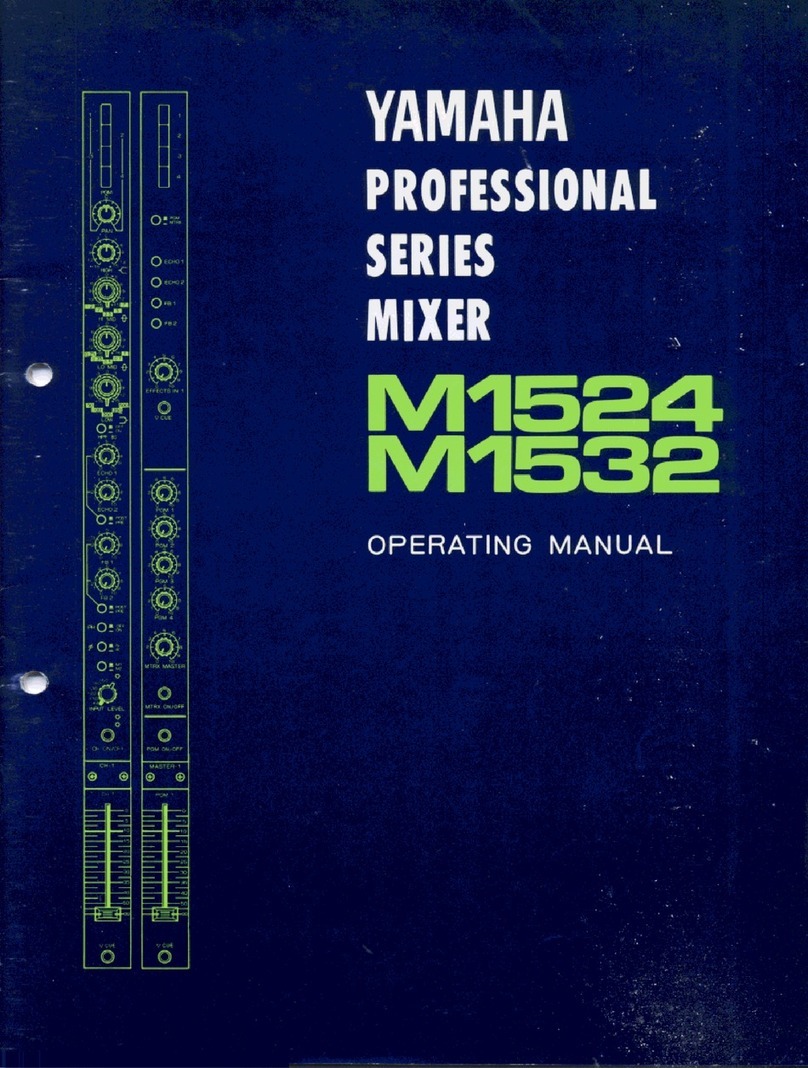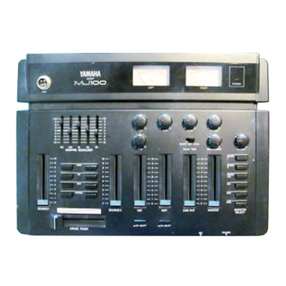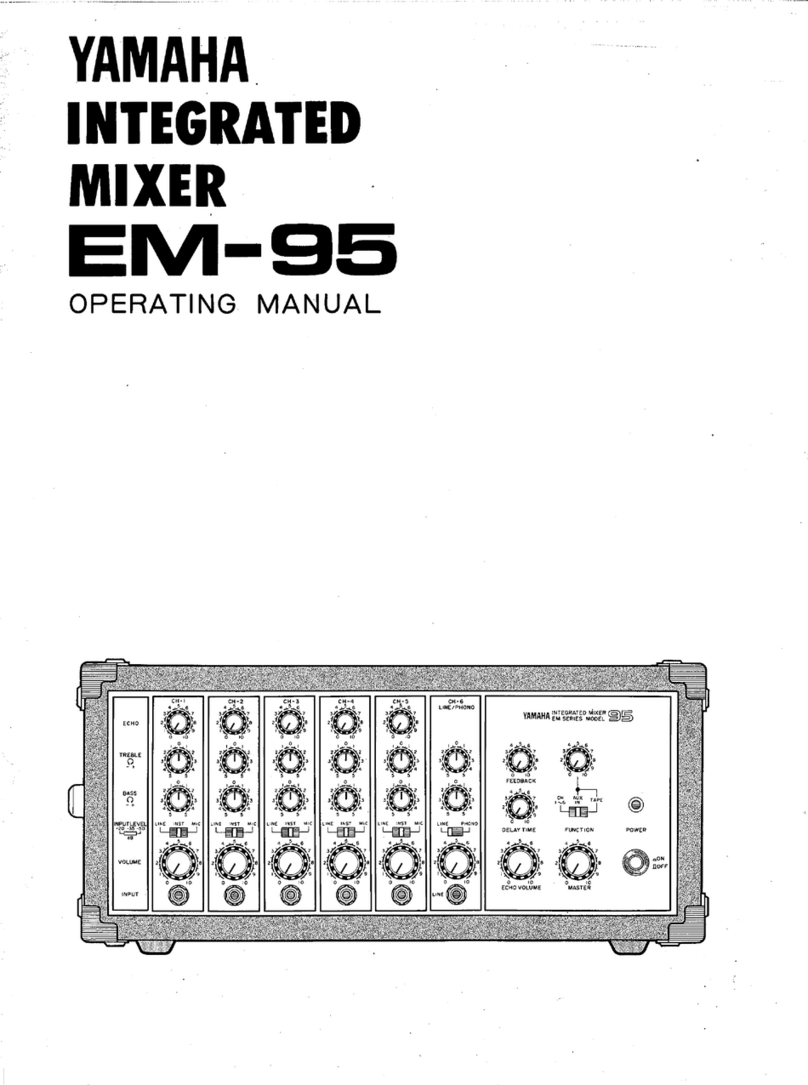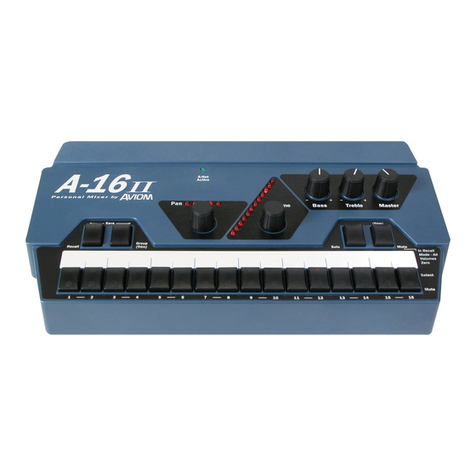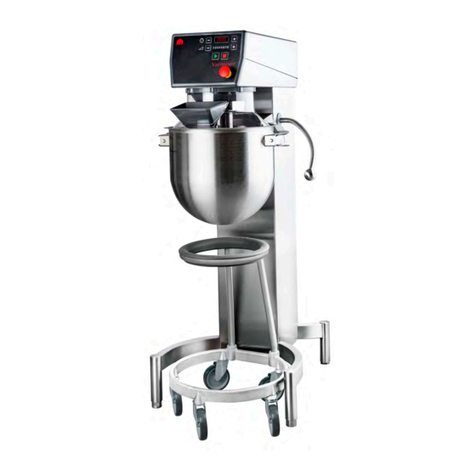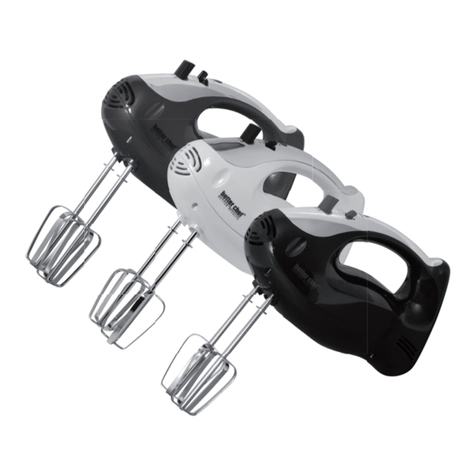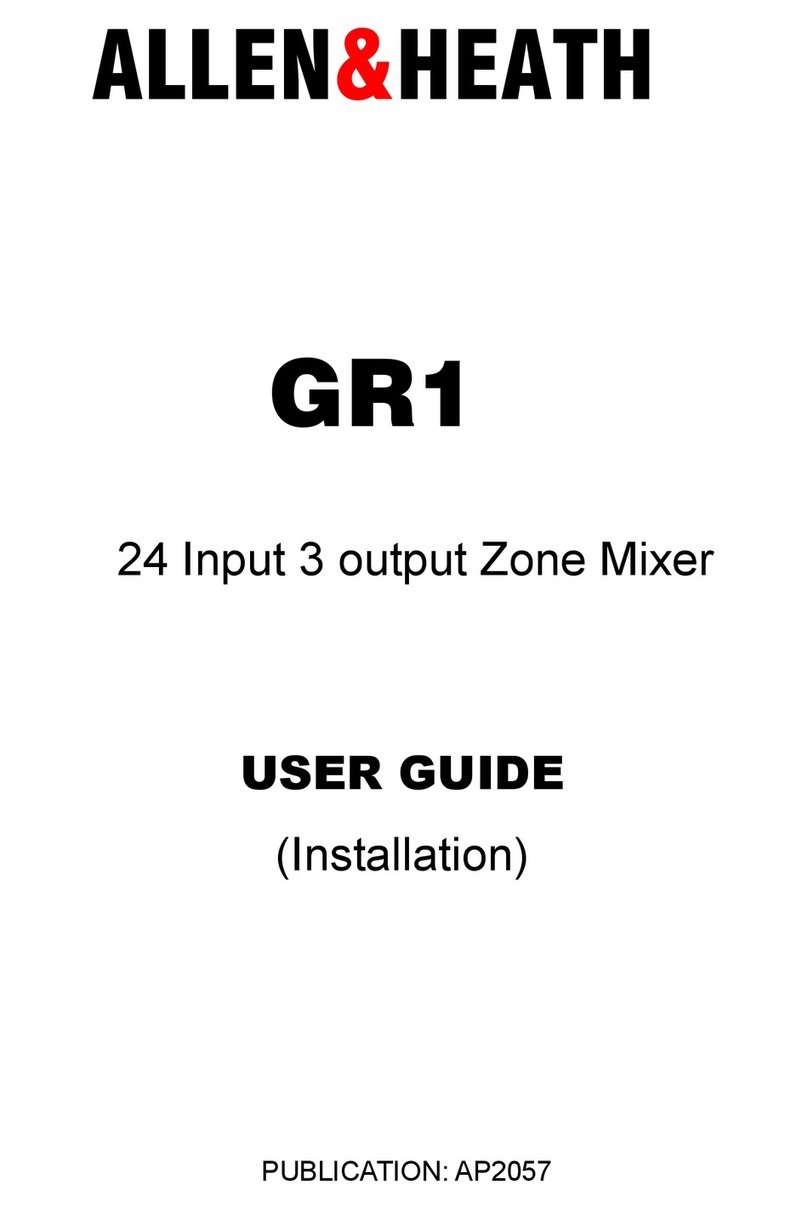
Stereo module
5
MX400 User’s Guide
Stereo module
1
A/B switch
This switch selects the signal source for the stereo module.
Select either ST INPUT A (unbalanced 1/4”phone type) or ST INPUT B
(RCA pin) input. This switch is not provided for [ST3] or [ST4].
2
Sensitivity select (+4/–10) switch
This switch selects the gain appropriate for the input signal level.The sen-
sitivity is –10dB when the switch is pressed in, and +4dB when the switch
is not pressed in.
3
SIGNAL and PEAK indicators
When thepost EQ signal level(nominallevel0dB) reaches–20dB,the SIG-
NALindicatorwilllight.Thisindicatorindicatesthatasignalisbeinginput.
When the post EQ signal level reaches 3dB before clipping level,the PEAK
indicatorwilllight.This indicatorindicates that the signal has approached
clippinglevel.Set thesignal levelbasedon thestatusof the PEAKindicator.
4
EQ controls (HIGH, LOW)
Thisisa2-bandequalizerwithcenterfrequencies,range,andtypeasshown
below.
HIGH: 12 kHz +/–15dB shelving type
LOW: 80 Hz +/–15dB shelving type
The frequency response is flat when the knob is in the center position.
5
AUX 1 / AUX 2 / AUX 3 / AUX 4 switches
These switches send the mono signal to the AUX buses. They are on when
pressed in.
[ST1] and [ST2] select the AUX 1 and AUX 2 buses.
[ST3] and [ST4] select the AUX 3 and AUX 4 buses.
6
Assign switches (1-2, 3-4, ST)
These switches assign the signal of the stereo module to the group outputs
and the ST output.The PAN control located below adjusts the stereo posi-
tion of the signal between the odd (ODD) group and left (L) outputs and
the even (EVEN) group and right (R) outputs.
7
BAL/PAN control
The BAL/PAN knob adjusts the balance or the L/R position of the stereo
modulesignal.Forexample if thisknob isturnedallthe way to theleft,the
signal will be sent only to the L and odd (ODD) groups whose assign
switchesarepressed.If itisturned allthe waytotheright,thesignal willbe
sent only to the R and even (EVEN) groups.If the knob is set to the center
position,the same amount of signal will be sent to the stereo L and R,and
the odd/even groups.
8
LEVEL control
This adjusts the output level of the stereo module.
S
T
1
A
B
+4
-10
PEAK
SIGNAL
HIGH
–15 +15
LOW
–15 +15
AUX 2
1–2
3–4
ST
AUX 1
BAL/PAN
L
ODD R
EVEN
LEVEL
010
ON
PFL
S
T
3
+4
-10
PEAK
SIGNAL
AUX 4
AUX 3
1
2
7
8
9
0
2
4
3
3
6
5
5
